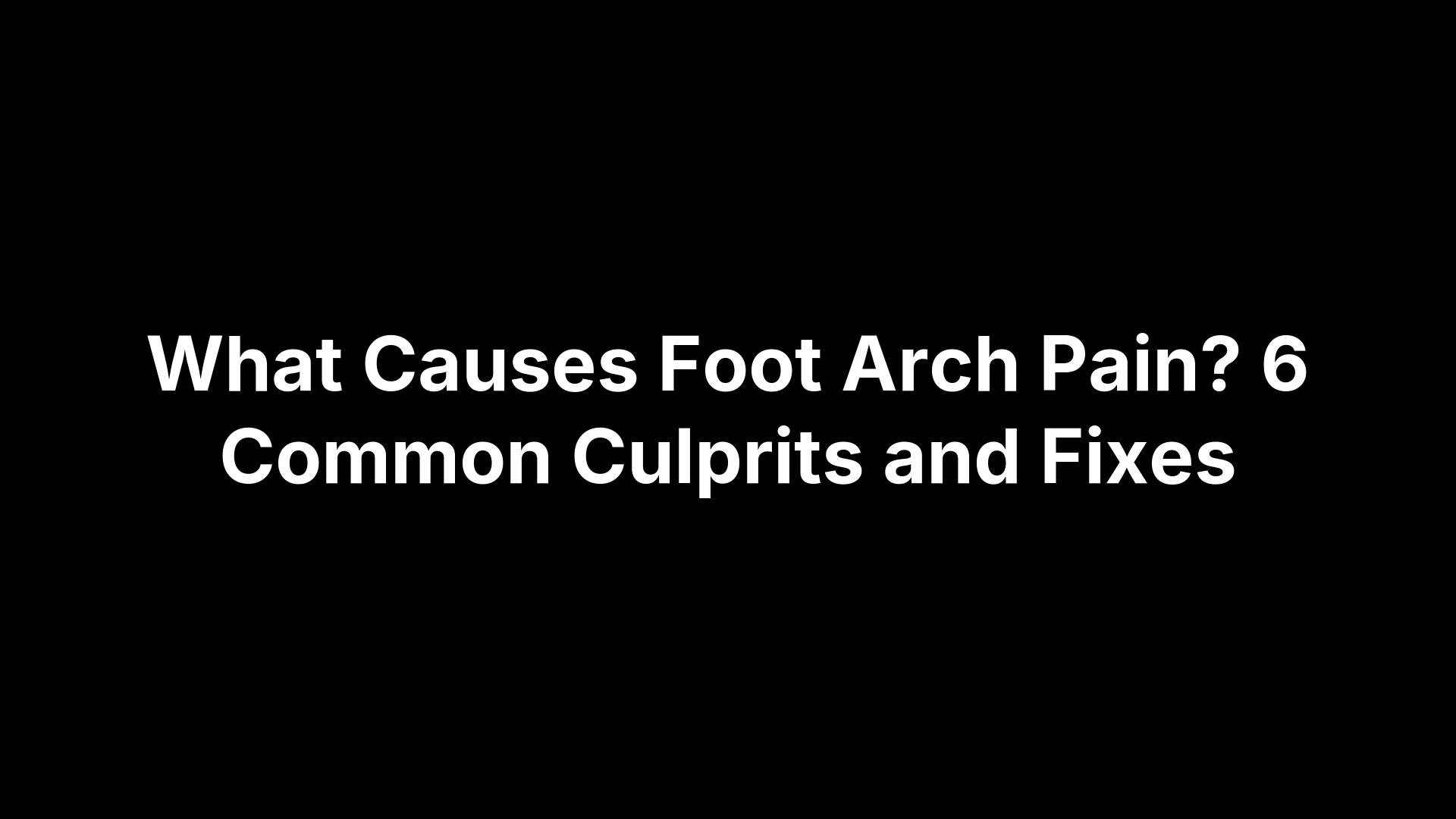The quickest, safest route to a healed sprained ankle is simple: pair a properly fitted brace with a step-by-step rehab plan.
This hand-picked list reviews 15 doctor-approved ankle supports—ranging from under-$15 sleeves to pro-grade rigid shells—so you can lock in the exact stability your grade I, II, or III injury needs. After the rankings you’ll find a buying checklist, evidence-based rehab moves, and clear answers to the questions patients ask us every day, all backed by Achilles Foot and Ankle Center’s clinical know-how. Ready to steady your recovery? The best gear is up next.
1. McDavid 195 Level 3 Max Support Lace-Up Ankle Brace
McDavid’s 195 is the workhorse many athletic trainers reach for when stability matters most.
Quick Specs & Support Level
- Lace-up + figure-6 straps, Level 3 support, ambidextrous
Why It’s Great for Sprains
Rigid side stays plus the figure-6 overlay mimic professional taping, practically locking out risky inversion during grade II–III rehab or game play.
Pros, Cons & Price
- Pros: machine-washable, reinforced eyelets, about $45
- Cons: slight learning curve, feels bulky in low-profile shoes
Fit & Wear Tips
Measure one inch above the ankle bone, lace snug, then re-tighten after warm-up while wearing a thin performance sock.
2. Z Athletics Zenith Lace-Up Adjustable Ankle Brace
A budget-friendly brace that delivers tape-like support without premium pricing.
Quick Specs & Support Level
- Ballistic-nylon lace-up with removable metal stays; moderate–high support
Best Use Cases
Jogging, weekend hoops, or everyday protection while rehabbing grade I–II sprains.
Stand-Out Features & Drawbacks
Cool mesh tongue and lifetime guarantee impress; metal stays may dig in narrow, low-cut shoes.
Fit & Care
Loosen first, lace snug top-down; hand-wash, air-dry Velcro.
3. Aircast A60 Ankle Support Brace
Aircast’s A60 packs semi-rigid stability into a feather-light slip-on that athletes will actually keep on.
Quick Specs & Support Level
- Semi-rigid 60° shell, single hook-and-loop strap, low profile; moderate support
Ideal Scenarios
- Soccer, tennis, or daily wear for chronic “roller” ankles and re-sprain prevention
Key Benefits & Limitations
- Slip-on speed and breathable mesh
- Less compressive for acute swelling; around $60
Proper Application
- Slide over sock, tighten strap medial → lateral, confirm shell seats under both malleoli
4. Bauerfeind MalleoTrain Compression Support
Bauerfeind’s medical-grade knit sleeve delivers science-backed compression without the bulk of laces or straps.
Quick Specs & Support Level
- Anatomical 3D knit, gel malleolar pads, mild–moderate support
Why We Like It for Early Rehab
Enhances proprioception and drains edema once rigid brace comes off.
Pros/Cons
- Pros: slim enough for dress shoes, latex-free
- Cons: premium price, not for unstable ankles
Sizing & Wear Duration
Measure ankle and calf circumference; wear six to eight daytime hours, remove overnight.
5. Ultra Ankle Ultra Zoom
Quick Specs & Support Level
Heat-moldable hinged-cuff shell; bilateral design; Level 3 (maximum) support.
Best For
Serial ankle sprainers in basketball, volleyball, and other stop-and-go sports.
Advantages & Things to Note
Won’t loosen mid-game, preserves natural up-and-down flexion; a bit bulky in ultra-low cleats; roughly $65.
Fit Instructions
Slide over crew-length sock, secure straps, then play—body heat custom-molds the shell after two sessions; re-check tension pre-practice.
6. Shock Doctor Ultra Gel Lace 849
Quick Specs & Support Level
- Lace-up brace with silicone-gel pads + bilateral stays
- Level 3 support, ambidextrous, ≈5 oz
Value Proposition
Gel cushions soften lace pressure while plastic stays lock out inversion—solid comfort and control for the first weeks of a tender grade I–II sprain.
Potential Downsides
Velcro keeper can snag laces, and the fit runs snug on wide feet.
Maintenance Tips
Slip out the gel pads, hand-wash the shell, then air-dry flat before re-inserting.
7. DonJoy Stabilizing Pro Ankle Brace
Quick Specs & Support Level
- Figure-8 nylon straps, lace-up core; low-profile; moderate–high support
Ideal User
Skill-position football or soccer athletes needing serious inversion control that slides under cleats.
Strengths & Weaknesses
- Pros: athletic-trainer favorite, durable ballistic body, about $40
- Cons: cotton laces may fray after a season; minimal cushioning for bony ankles
Fitting Suggestions
Double-knot laces, cross figure-8 straps snugly from medial to lateral, finish with top cuff; re-tighten after first drill.
8. ASO EVO Ankle Stabilizer
Quick Specs & Support Level
Three-layer lockdown — lace-up core, figure-8 straps, elastic top cuff; moderate-high support, ≈4.5 oz, ambidextrous.
Why Clinicians Recommend It
Studies show ASO braces cut re-sprain risk by 50 % in court sports. Overlapping straps deliver 360° stability yet allow plantar-flexion.
Trade-Offs
Takes a minute to lace and feels bulky in minimalist shoes.
Care & Longevity
Machine-wash in a pillowcase, air-dry; lifespan ~8 months of daily wear.
9. Futuro Comfort Lift Stirrup Ankle Support
Quick Specs & Support Level
- Elastic knit sleeve with integrated arch panel; mild support; 1.5 oz
Best Use Cases
Perfect for office wear, casual walking, and late-stage rehab when you need only gentle compression.
Benefits & Limitations
Ultra-light, under $20, and slides into dress shoes; but offers minimal side-to-side restraint—skip it for cutting sports.
Fit Instructions
Slip on like a sock, align the heel pocket, and smooth wrinkles to avoid pressure lines.
10. Sleeve Stars Adjustable Ankle Support Brace
Quick Specs & Support Level
- Neoprene sleeve plus detachable 35-inch wraparound strap; mild–moderate adjustable compression
Ideal Scenarios
Early weight-bearing with lingering swelling, double duty for plantar-fasciitis arch pain.
Pros & Cons
- Pros: customizable tension, under $20, one size fits most
- Cons: Velcro snags fabric, retains heat in summer workouts
Wearing Advice
Test both figure-8 and stirrup wrapping patterns to target ligament zone; wash cold, lay flat to dry after each use.
11. Zamst Filmista Ankle
Filmista swaps bulky fabric for a featherweight polyurethane wrap that feels like tape.
Quick Specs & Support Level
0.6 mm film, dual wrap, moderate support, <1 oz, ambidextrous.
Why Athletes Love It
Virtually disappears in racing flats, boosts proprioception, still wicks sweat.
Drawbacks
Stretches after roughly 250 miles and lacks rigidity for lateral cuts.
Application Tips
Stretch firmly, overlap 50 %, smooth wrinkles, replace when edges curl.
12. Copper Compression Recovery Ankle Sleeve
Copper Compression’s slide-on sleeve is the lightweight choice when laces, straps, and plastic shells feel like overkill.
Quick Specs & Support Level
- 88 % copper-infused nylon, 12 % spandex
- Mild 20–25 mmHg compression, weighs < 1 oz
Use Cases
- All-day wear at standing jobs
- Overnight swelling control
- Odor-conscious users
Benefits & Caveats
- Antimicrobial fibers fend off stink; seamless knit slips into dress shoes
- No lateral stays—won’t stop a roll
Fit & Care
- Measure narrowest ankle; size down for snug feel
- Wash cold, tumble-dry low
13. Neo G Airflow Ankle Support Sleeve
Quick Specs & Support Level
- Breathable multi-zone knit; class I (mild) compression; latex-free; < 1 oz
Ideal For
Gentle yoga, desk duty, and late-stage rehab when you need a comforting “hug” more than rigid restriction.
Advantages/Disadvantages
- Pros: moisture-wicking, slips under any shoe, costs < $25
- Cons: can slide on very slim ankles, minimal lateral restraint
Fitting Guidance
Position the logo front-center, smooth wrinkles, and swap out once the knit loses rebound.
14. Bodyprox Adjustable Ankle Support Wrap
Quick Specs & Support Level
Open-heel neoprene wrap with twin criss-cross straps; one size fits most; mild–moderate, customizable compression.
Recommended Situations
Grab-and-go support for light hikes, shower use, or as a backup brace when traveling on a tight budget.
Pros & Cons
- Pros: <$15, ambidextrous, quick on/off, hand-washable
- Cons: minimal rigid stability, Velcro longevity so-so, neoprene can feel toasty in summer
How to Strap
Anchor the strap under the arch medial side, cross over the dorsum, thread behind the Achilles, then secure laterally. Adjust the second pass for snugness—firm enough to reduce swelling yet loose enough to keep toes pink and warm.
15. Aircast AirSport+ Brace
Quick Specs & Support Level
Semi-rigid shells + twin Aircells, rear-entry buckle; moderate–high support.
Best For
First games back after grade II–III sprains in court or trail sports.
Key Benefits & Limitations
Aircells tame swelling and fine-tune fit; buckle = 10-second on/off. Bulky under slim shoes, about $70.
Proper Usage
Slip heel in, latch buckle, pump Aircells until firm yet comfy; re-inflate after long sessions.
How to Pick the Right Ankle Support for Your Injury
Shopping is easier when you match the brace to the biology. A mild ligament stretch needs a very different tool than a full-on grade III tear. Use the quick guide below to lock in the proper ankle support for sprains without wasting money—or precious rehab time.
Understand Your Sprain Grade Before Buying
Most podiatrists break ankle sprains into three buckets:
- Grade I (micro-tears, little swelling): light sleeves or elastic wraps keep swelling down while you stay mobile.
- Grade II (partial tear, clear instability): lace-up or hinged braces that mimic athletic taping limit risky inversion/eversion yet allow forward flexion.
- Grade III (complete rupture, wobble city): rigid stirrups or hinged-cuff shells provide near-immobilization for the first 2–4 weeks, then step down to a lace-up.
If you’re not sure where you land, a quick evaluation or X-ray rules out fractures and sets the right starting point.
Sleeve vs. Wrap vs. Lace-Up vs. Rigid Stirrup
Tiny design tweaks change everything from shoe comfort to insurance coverage.
| Brace type | Typical weight | Motion restriction | Avg. price | Shoe fit |
|---|---|---|---|---|
| Elastic sleeve | <1 oz | Minimal | $10–$30 | Any, even dress shoes |
| Neoprene wrap | 2–3 oz | Mild, adjustable | $15–$25 | Sneakers, boots |
| Lace-up + figure-8 | 4–6 oz | Moderate–high | $35–$60 | Most athletic shoes |
| Rigid stirrup/hinged shell | 6–8 oz | High–maximum | $60–$90 | Roomy sneakers/cleats |
Getting Sizing Right the First Time
Grab a fabric tape and stand. Measure the circumference one inch above the ankle bone, then compare to the brand’s chart—sizes often differ from shoe numbers. Between sizes? Go smaller for compression sleeves, larger for rigid shells to avoid pressure spots. Always test fit over the sock thickness you plan to wear on game day.
Insurance, FSA/HSA, and Prescription-Only Braces
Many level-3 supports (e.g., Aircast, Ultra Zoom) carry L-code designations, making them FSA/HSA-eligible; keep your receipt. Grade III sprains or post-op patients may qualify for a prescription stirrup that insurance covers at 80–100 %. Ask your provider for a letter of medical necessity before you hit “buy.”
Rehab Techniques That Work With Your Brace
A solid ankle brace is only half the battle. Pairing it with evidence-based rehab accelerates tissue healing, limits stiffness, and—most important—cuts your odds of rolling the joint again. The timelines below assume you’re already in the correct ankle support for sprains based on the grading advice above.
First 72 Hours: R.I.C.E. vs. P.E.A.C.E. & L.O.V.E.
Forget the ice-and-couch routine of old. Modern protocols blend short bouts of cold with early, pain-guided movement.
- R.I.C.E. (Rest, Ice, Compression, Elevation) still calms angry swelling, but limit icing to 15 min every 2 h.
- P.E.A.C.E. reminds you to Protect (brace), Elevate, Avoid anti-inflammatory overload, Compress, and Educate yourself on healing timelines.
- L.O.V.E. follows: Load, Optimism, Vascularization, and Exercise. Translation—start gentle foot pumps, circles, and toe curls the moment pain allows.
Safe Weight-Bearing and Gait Progression
Use crutches until you can walk without a limp. Typical milestones:
- Day 1–3: Partial weight in brace, heel-touch first, pain ≤ 3/10.
- Day 4–7: Full weight in brace, slow roll through the forefoot.
- Week 2: Ditch crutches; transition to lace-up or sleeve for daily tasks.
- Week 3–4: Begin short, level walks in athletic shoes; add stair climbing.
If pain spikes above 4/10, back up a step for 24 hours.
Home Exercises to Prevent Re-Injury
Perform the circuit below once pain at rest is ≤ 2/10. Three sets per move, every other day:
- Alphabet ankle (draw A–Z with big toes)
- Theraband resisted eversion/inversion,
3 × 15each direction - Single-leg balance: 30 sec eyes open → 15 sec eyes closed
- Calf raises off a step:
3 × 12, slow 3-second lowers
Gradually layer in hop-to-stick drills and lateral shuffles while still wearing your brace. Consistency here is what turns temporary ankle support for sprains into a permanently stronger joint.
Frequently Asked Questions About Ankle Supports
Got more questions? The fast facts below cover what patients ping our clinic about most.
Should I Wear Ankle Support for a Sprained Ankle?
Yes—wearing the right brace limits harmful side-to-side wobble, improves joint position sense, and cuts re-sprain rates by roughly 40 %. Phase it out once single-leg balance is pain-free.
Is Compression Good for a Sprained Ankle?
Absolutely. A 20–30 mmHg sleeve squeezes excess fluid back into circulation, taming swelling and ache. Just ensure toes stay warm and pink—numbness means it’s too tight.
What to Do for a Sprained Ankle in a Child?
Treat kids carefully: growth-plate injuries mimic sprains. If they refuse to bear weight or pain sits above the ankle, get an X-ray and podiatry visit. Use lightweight, size-adjustable braces meanwhile.
Is It Better to Rest a Sprained Ankle or Walk on It?
Total couch rest delays healing. Aim for pain-guided walking in your brace as soon as your gait is limp-free and discomfort sits at 3/10 or less.
When to See a Foot & Ankle Specialist
Most minor sprains recover with a solid brace and home exercises, but certain danger signs require more than off-the-shelf ankle support for sprains.
Red-Flag Symptoms You Shouldn’t Ignore
- Can’t bear weight after 24 h
- Visible deformity or pain above the ankle joint
- Numbness, tingling, or cold, bluish toes
- Swelling that balloons despite compression
If any apply, book an exam within 48 hours.
Custom Bracing and Advanced Treatment Options
Specialists can fit vacuum stirrups, hinged cuffs molded to your anatomy, or 3-D printed orthotics, and even offer PRP or ultrasound-guided injections to quiet stubborn ligament pain.
How Professional Guidance Speeds Recovery
A podiatrist builds a stepwise plan: gait scan, progressive loading, and sport-specific testing so you shed the brace sooner and return stronger, not merely pain-free.
Quick Recap and Getting Back on Your Feet
Pick the brace that matches your ligament damage—light sleeves for grade I, lace-ups for grade II, and rigid shells for grade III—then size it by measuring one inch above the ankle bone and testing fit over the sock you’ll actually wear. From there, stick to the load-progression rehab plan: early compression and elevation, limp-free walking in your brace, and balance drills to bullet-proof the joint. Consistency is what turns temporary ankle support for sprains into lasting stability.
Central Virginia neighbors: if you’d like a pro fitting or a same-day sprain evaluation, schedule an appointment with our podiatry team at Achilles Foot and Ankle Center. We’ll have you moving confidently—fast.






